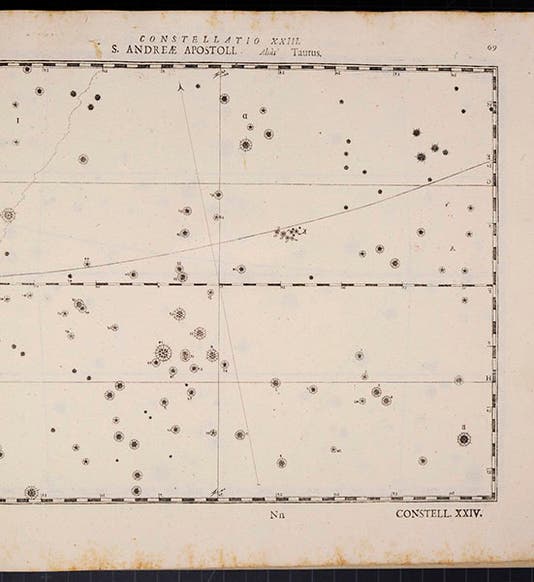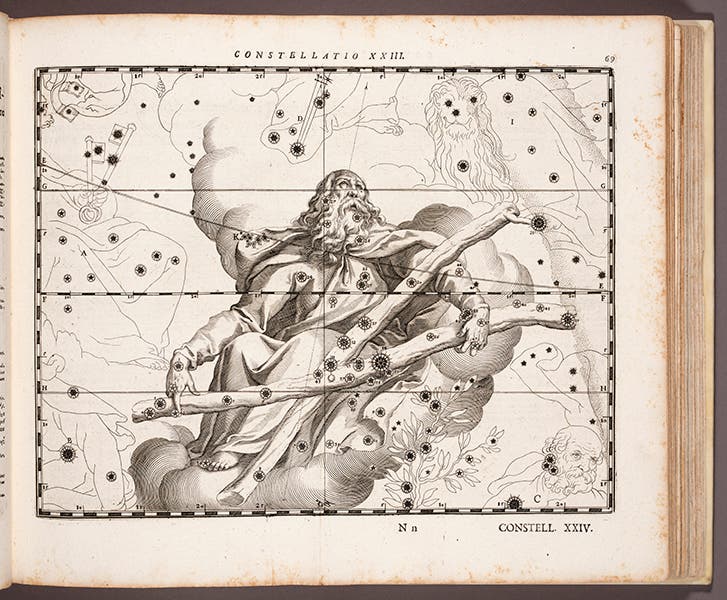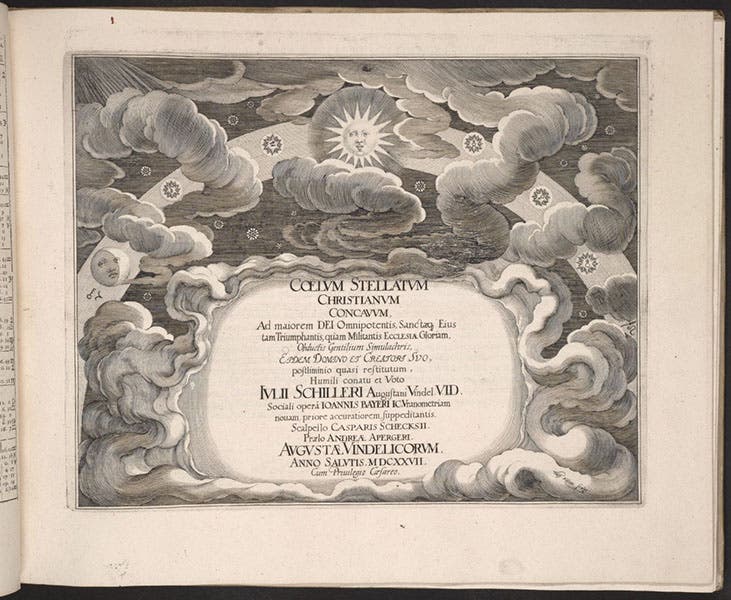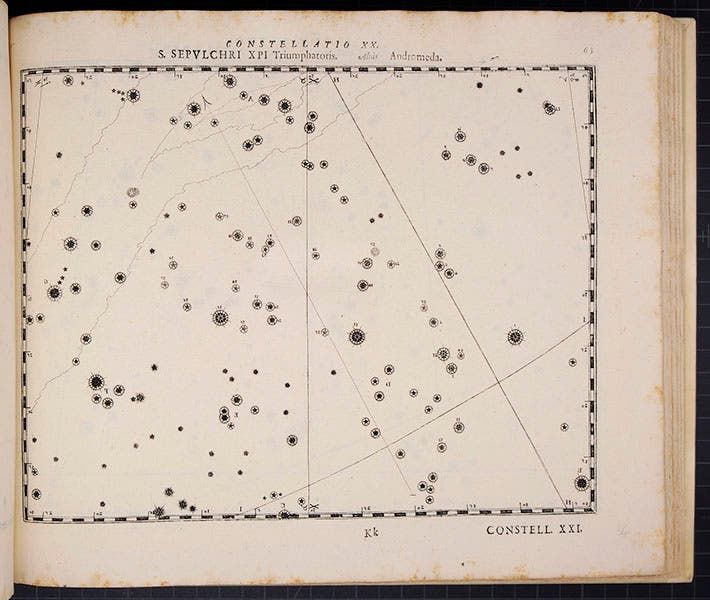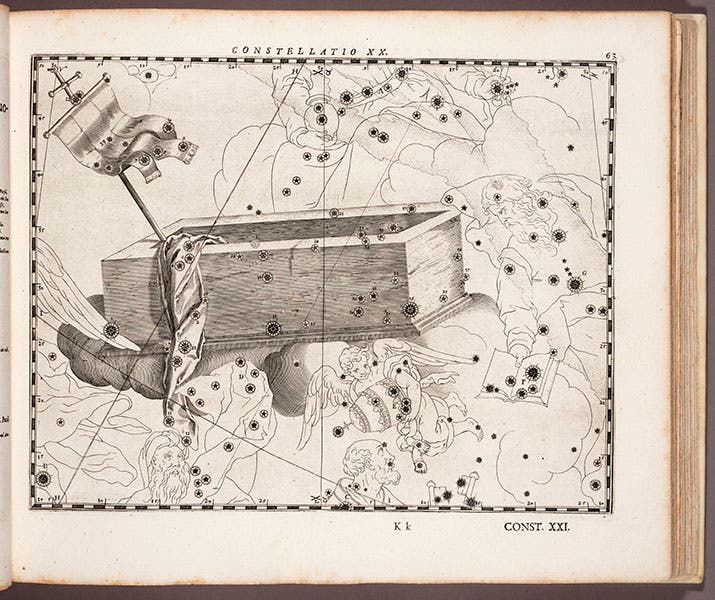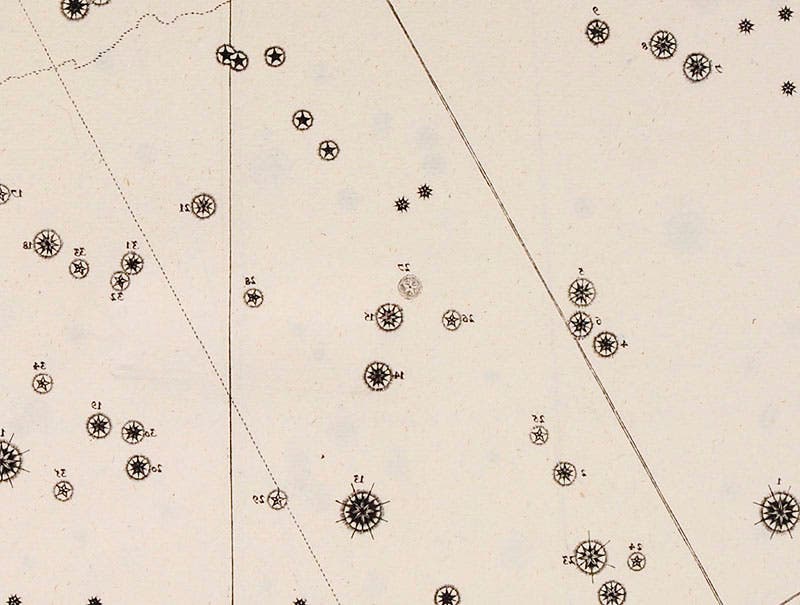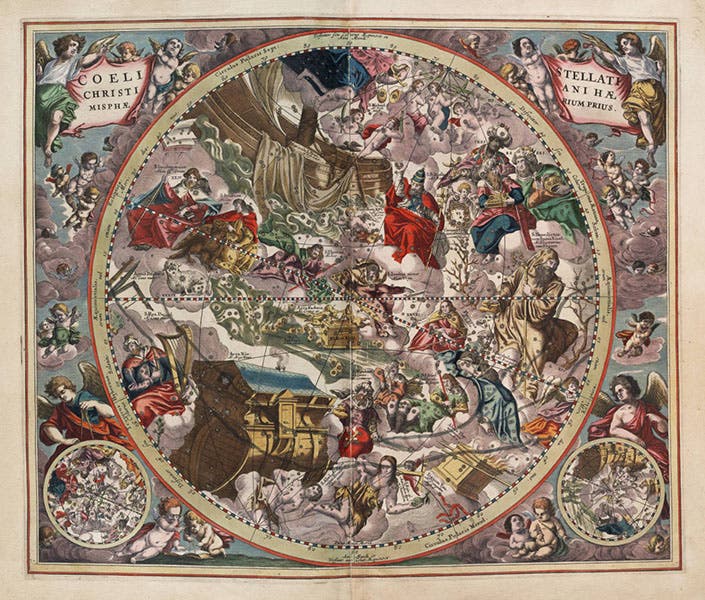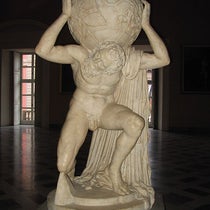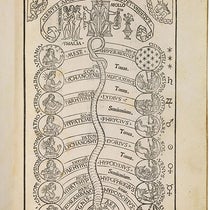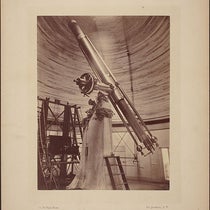Scientist of the Day - Julius Schiller
Last week we featured Julius Schiller, an astronomer who published a star atlas in 1627 that featured Christian constellations such as St. Andrew and the Sepulcher, replacing pagan constellations such as Taurus and Andromeda, and indeed all the rest. Schiller called his book Coelum stellatum Christianum, and despite the fact that it swept aside a considerable body of astronomical tradition, it was nevertheless an accurate and quite beautiful star atlas. We said at the end of that post that Schiller published another star atlas that same year, and we promised to discuss it, as well as the fate of his attempt to revolutionize stellar nomenclature, in a future post. Today we fulfill that promise. If you wish to review our previous post first, you may access it here.
Schiller's Coelum stellatum Christianum, the atlas we discussed in our first post, not only had different constellation figures from its major predecessor, Johann Bayer's Uranometria (1603), but the star positions were reversed from those in Bayer's atlas. Bayer showed the star positions as we would see them from earth; Schiller presented the stars as if on a celestial globe, viewed from the outside. Perhaps to satisfy those who preferred to view the stars from within, Schiller published that same year, 1627, a second star atlas with reversed plates. The easiest way to do that, without having to engrave all new plates, would be to print counterproofs, and that is what Schiller did. A counterproof is the result of printing an engraving on a sheet of paper, and then immediately running that print through the press again, transferring the impression to another piece of paper. That second print is a counterproof. By the nature of the process, a counterproof will have an image that is the reverse of the first proof. Schiller took counterproofs of all his engraved plates, and he did so after the stars, number labels, and grid had been engraved, but before the constellation figures had been added. The set of counterproofs was published as Coelum stellatum Christianum concavum, the concave Christian starry heavens. But because the constellation figures had not been added yet, in truth in was just a Coelum stellatum concavum, and could be used by anyone, whether they accepted the change in nomenclature or not.
Our copy of the concave atlas is bound in immediately following the normal atlas. It lacks the engraved title page, which is too bad, because the titlepage engraving is, cleverly, a copy of the titlepage in the first atlas, but with the Christian figures representing the planets left out. But all of the other plates are present in our copy. The titlepage we show here (third image, just above) is from the copy at the Library of Congress.
Our first image shows the counterproof of the St. Andrews/Taurus plate, with no constellation figures, and the image directly below is the completed plate from the first atlas. You will note that all the numbers and letters on the counterproof are backwards, as you would expect in a counterproof; the title label was added separately and is right side around.
Our fourth and fifth images show the Selpulcher/Andromeda plate, the top one the counterproof from the concave atlas, just above the completed plate from the first atlas. We also show a detail from the fourth image, the Sepulcher, so you can appreciate the detail, and also see the first depiction of the Andromeda nebula, the cloudy blob identified with the number 27 in reverse (sixth image just below).
Schiller’s proposal that we replace the pagan constellations with Christian ones did not meet with a warm reception. Astronomers by nature have a strong sense of history, because they often use older observations in trying to measure such things as precession, and since all those ancient catalogs use the traditional Ptolemaic constellations, it apparently made little sense to try to convert them all to a new nomenclature system. The only celestial cartographer who was willing to accommodate Schiller’s proposal was Andreas Cellariuis, who included two celestial hemispheres based on Schiller’s atlas in his Harmonia macrocosmica (1661).
As you can see by the one we reproduce (seventh image, just above), these are gorgeous hand-colored engravings. But Cellarius also included two hemispheres based on the pagan constellations, so he wasn’t really taking a stand – he was just showing the options. And no later astronomer was willing to do even that. Schiller’s Christian constellations, in spite of their beauty, would lie dormant and unused until they became historical curiosities and the subject for discussions like this one.
Dr. William B. Ashworth, Jr., Consultant for the History of Science, Linda Hall Library and Associate Professor emeritus, Department of History, University of Missouri-Kansas City. Comments or corrections are welcome; please direct to ashworthw@umkc.edu.

